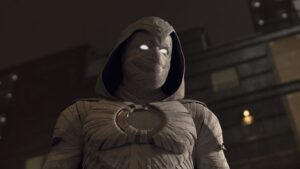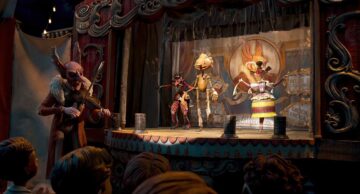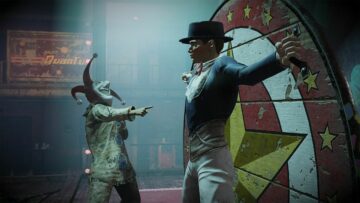Eternals brought the Celestials into the MCU at last, a huge boon for fans of the cosmic side of Marvel Comics. But people who are aware of Marvel Comics but aren’t plugged into the cosmology of its sprawling universe could be left wondering about a possible connection between the Celestials, the giant space gods that threaten to destroy Earth, and Galactus, a giant space god who threatens to destroy Earth who often pops up in Fantastic Four books (and could very well show up in Marvel Studios’ own Fantastic Four reboot movie).
But is Galactus a Celestial like Arishem and Tiamut in Eternals? No. But he’s not far off from those larger-than-life characters.
Here’s how to tell them apart.
A history of the Celestials
Since so much of Eternals focuses on the birth of Tiamut the Celestial, let’s start with those big guys. Created by Jack Kirby within the pages of The Eternals in 1976, the Celestials are a race of gigantic ultra-powerful cosmic beings created by the First Firmament, an embodiment of the first Cosmos to ever exist. The First Firmament created life, resulting in two races — the Aspirants, who wanted the approval of the First Firmament and to follow its wishes, and the Celestials, who wanted to take charge of their existence, to shape the universe around them. The Celestials rebelled against their creator, shattering the First Firmament into the first-ever Multiverse, which became known as the Second Cosmos, and the Celestials have survived this cycle of destruction and rebirth many times over (For reference, a Cosmos is comprised of all of reality, each universe in the multiverse and everything outside of them). For example, Marvel’s comic book timeline began in the Seventh Cosmos, and is currently the Eighth Cosmos.
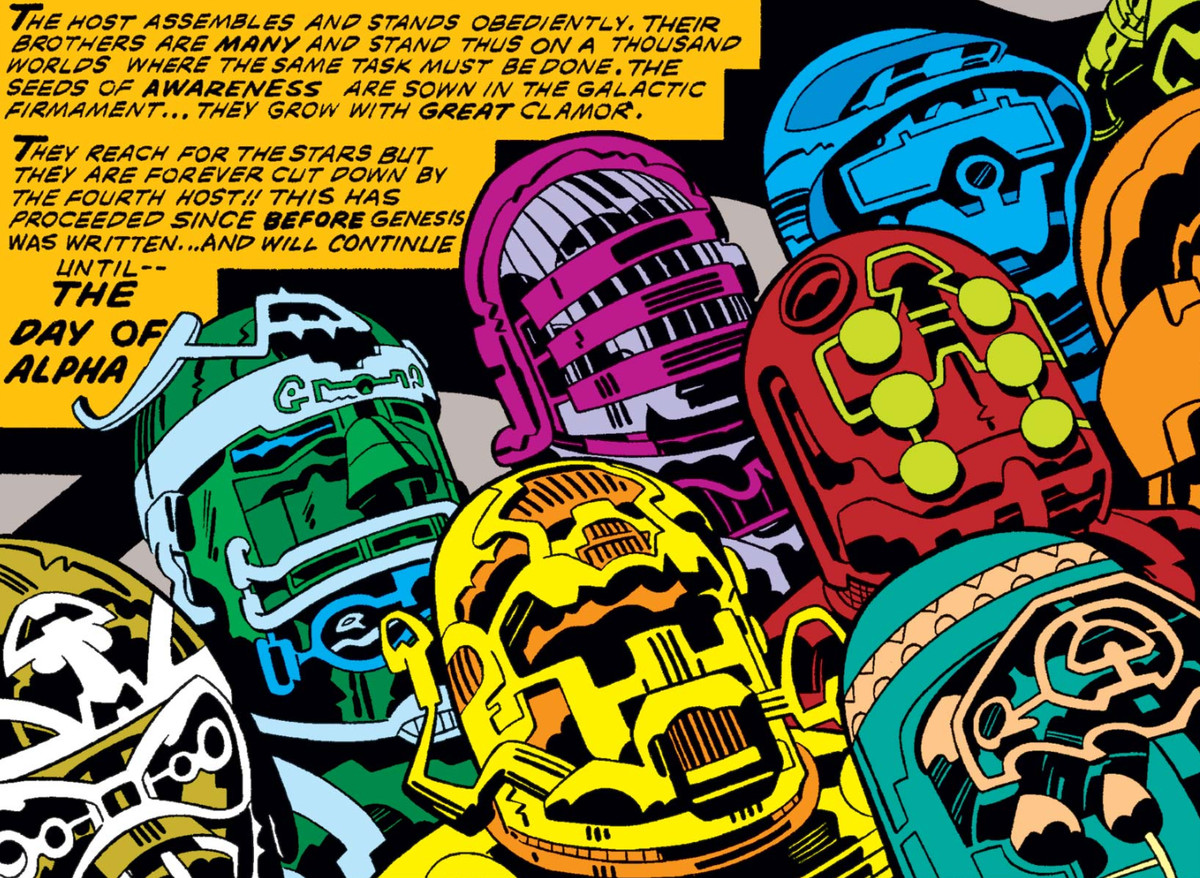
Celestials visit inhabited planets to experiment on what they deem to be “lower” life-forms in groups called “Celestial Hosts” to create Eternals and Deviants of every species. On Earth, this obviously led to the Eternals and Deviants we’ve come to know (or the species of Homo immortalis and Homo descendus, respectively, created from Homo sapiens). More interestingly in its implications for the MCU, they also introduced a gene that caused Homo superior — that is, Mutants — to eventually exist. After their experiments, the Celestials leave for a while before returning to judge the planet. Should they find the planet wanting, they will destroy it.
How is Galactus different from a Celestial?
Galactus wasn’t created by the First Firmament. But he is from previous incarnation of the Cosmos.
Galactus initially appeared as a world-ending threat in the pages of Fantastic Four, created by Stan Lee and Jack Kirby. And the duo would go on to flesh out his origin story in the pages of Thor: Originally a guy named Galan, Galactus was born on an incredibly advanced planet called Taa, in a time very close to the end of the existence of the Sixth Cosmos. The Taaians discovered that just as the universe began with a Big Bang, it would end with a Big Crunch — the entire universe would collapse together, destroying everything and starting the cycle over again for the next Cosmos. Galan was sent to search space to find a way to prevent the Big Crunch, and was unsuccessful. Instead Galan somehow found himself surviving this collapse of everything, emerging in the Seventh Cosmos as the Devourer or Worlds, an agent of universal rebirth.
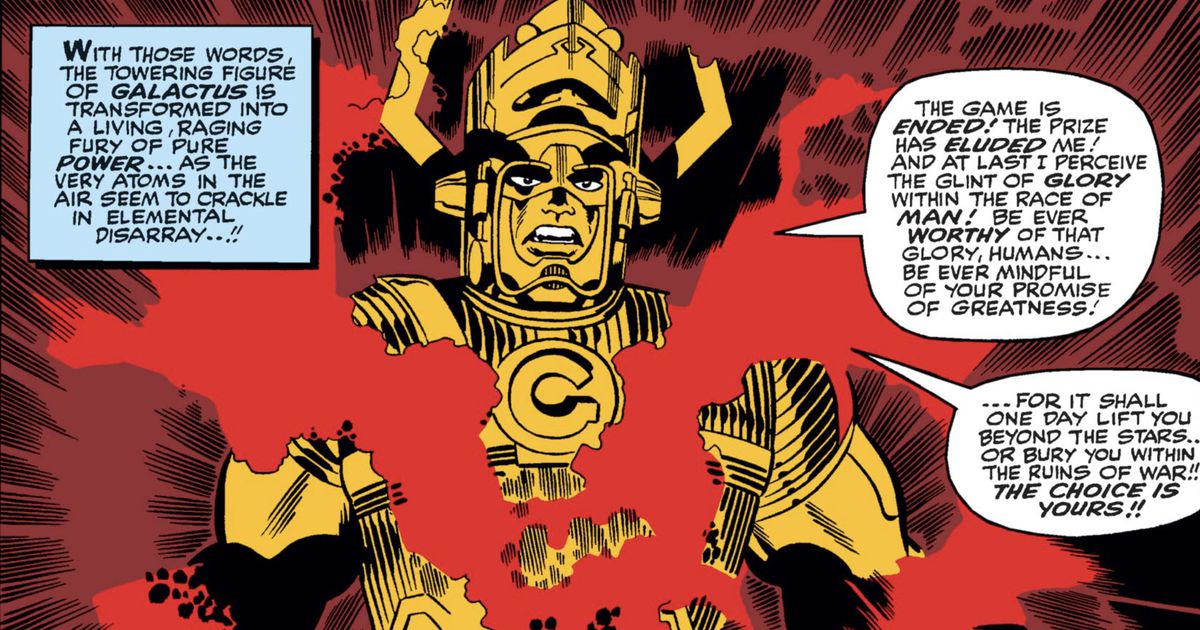
Exactly how this happened is under some contention, as comics sometimes conflict with each other, and Galactus’ own story differs from that of a different entity from the Sixth Cosmos. But the common thread is that Galan of Taa survived the collapse of the Sixth Cosmos and emerged as Galactus in the Seventh.
Galactus’ function also separates him the most from the Celestials. As the Devourer of Worlds, Galactus needs to eat planets to survive. He doesn’t experiment on his food, he’s not here to judge anything. He simply hungers, uses his gigantic spaceship to convert a planet into pure cosmic energy, and he feasts. Galactus does occasionally imbue a mortal with the Power Cosmic, conscripting them to serve as his herald and seeker of new planets to consume. But he shares none of the same intentions as the Celestials, and doesn’t work at all on the same scale.
But just because he’s gigantic, from an earlier universe, and has a silly hat, doesn’t mean Galactus is one of the Celestials. And he could still have his own role to play in the Marvel Cinematic Universe — whenever that Fantastic Four movie finally gets off the ground. With giant cosmic entities obviously in play, anything seems possible in the Marvel movie side of this colorful universe.
Source: https://www.polygon.com/22765316/galactus-celestial-eternals-tiamut-marvel
- "
- advanced
- All
- around
- Books
- caused
- charge
- Common
- conflict
- consume
- Cosmos
- creator
- destroy
- discovered
- earth
- eat
- energy
- experiment
- Figure
- Finally
- First
- follow
- food
- here
- history
- How
- How To
- HTTPS
- huge
- IT
- Key
- Led
- Marvel
- movie
- multiverse
- Other
- People
- planet
- planets
- play
- Plugged
- Polygon
- power
- Race
- Reality
- Scale
- Search
- Shares
- So
- Space
- start
- survive
- The
- time
- Universal
- What
- WHO
- Wikipedia
- within
- Work

